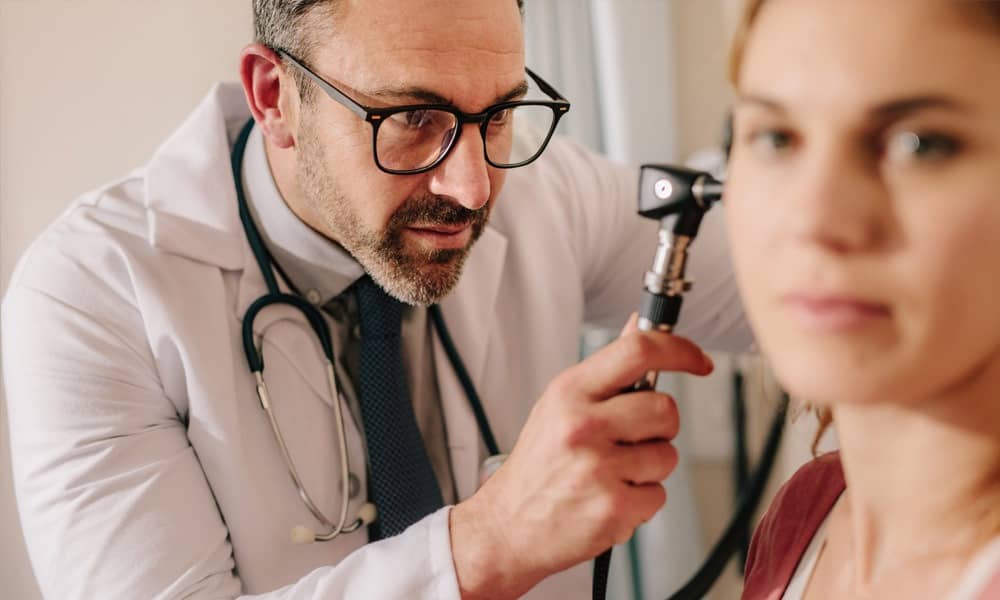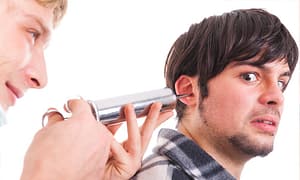“My ears are blocked, and I can’t get to a centre! What do I do?”
The answer? Don’t panic! We will come to you at your home. We always wear PPE, face mask or shield, an apron and sanitary gloves to keep you safe during these testing times.
When our Wax Removal Specialists arrives, they will go through a consent form with you first. This asks quite a few questions to establish what needs doing, whether there are any medical issues we need to know about (perforated eardrums, infections, balance problems, tinnitus etc), as well as knowing what wax removal procedures you may have had previously.
Once that is completed, we will examine your ears to ascertain what would be the best method of wax removal for you – which we will then discuss in detail.
The choices are:
- Water irrigation – this is where we use body-temperature water to gently syringe the wax from your ears. This procedure has traditionally been done at the GP practices – although they are not currently offering wax removal services at all. You should not have water syringing if you have perforated eardrums or if you currently have an ear infection.
- Microsuction – this is a much more modern method of wax removal, where we use a narrow suction pipe to gently suck the wax out of the ear canal. Our specialist will wear “loops”, which are glasses with a light attached, so that they can clearly see inside your ears to remove the wax.
- Endoscopic Microsuction – very similar to microsuction, but instead the specialist uses an endoscopic camera attached to an iPod so that we can record and view the process of microsuction on the screen. This makes the removal extremely accurate, and you can watch the procedure back on the camera afterwards if you want to. Both methods of microsuction are generally safer and more comfortable than water syringing – it is a procedure suitable for everyone.
- Manual removal – Sometimes, where water irrigation and microsuction haven’t succeeded in removing the wax, we can use a Jobson Horne to clear it. This is a small stick with a loop or hook on the end, allowing us to gently pull impacted wax out of the ear. This is usually a last resort, and the specialist will always take great care with this procedure – as with any other.
You can read more detailed explanations of all these methods here.
We do not offer or advise ear candling. It is not a recommended procedure for ear wax removal. Research has found that it doesn’t always work, and it can result in injury to the ear in the form of burns, blocking the ear canal further, and even perforations. Steer clear of this method!
Once the decision has been made as to the method, then the specialist will set the room up to ensure that the procedure can be carried out in the safest, most secure position possible: typically either sat at a table or working around you in an armchair if necessary. We also cater for people who are bedbound – we take great care in ensuring everything is safe.
If we are unable to clear the wax completely during this first appointment, then we will need to arrange a follow up visit. Sometimes the wax may still be too hard and not possible for the specialist to remove safely (please note that there is an additional charge for a follow-up).
Our expert audiologist brings specialist portable equipment with them and will set this all up fully before commencing any procedure. They will talk you through every step of the procedure to ensure your satisfaction and comfort at all stages.
Once the wax is removed, we will check your ears again and advise accordingly. A further appointment may be required.
With your consent, we will send a letter to your GP to advise on what procedure we’ve carried out and the outcome.
We offer home visits within a 10-mile radius of any of our centres in Hinckley, Leicester and Rothwell. We charge £120-00 for the visit. Always use olive oil or almond oil for a few days prior to your appointment (unless you have perforated eardrums or an ongoing ear infection).




